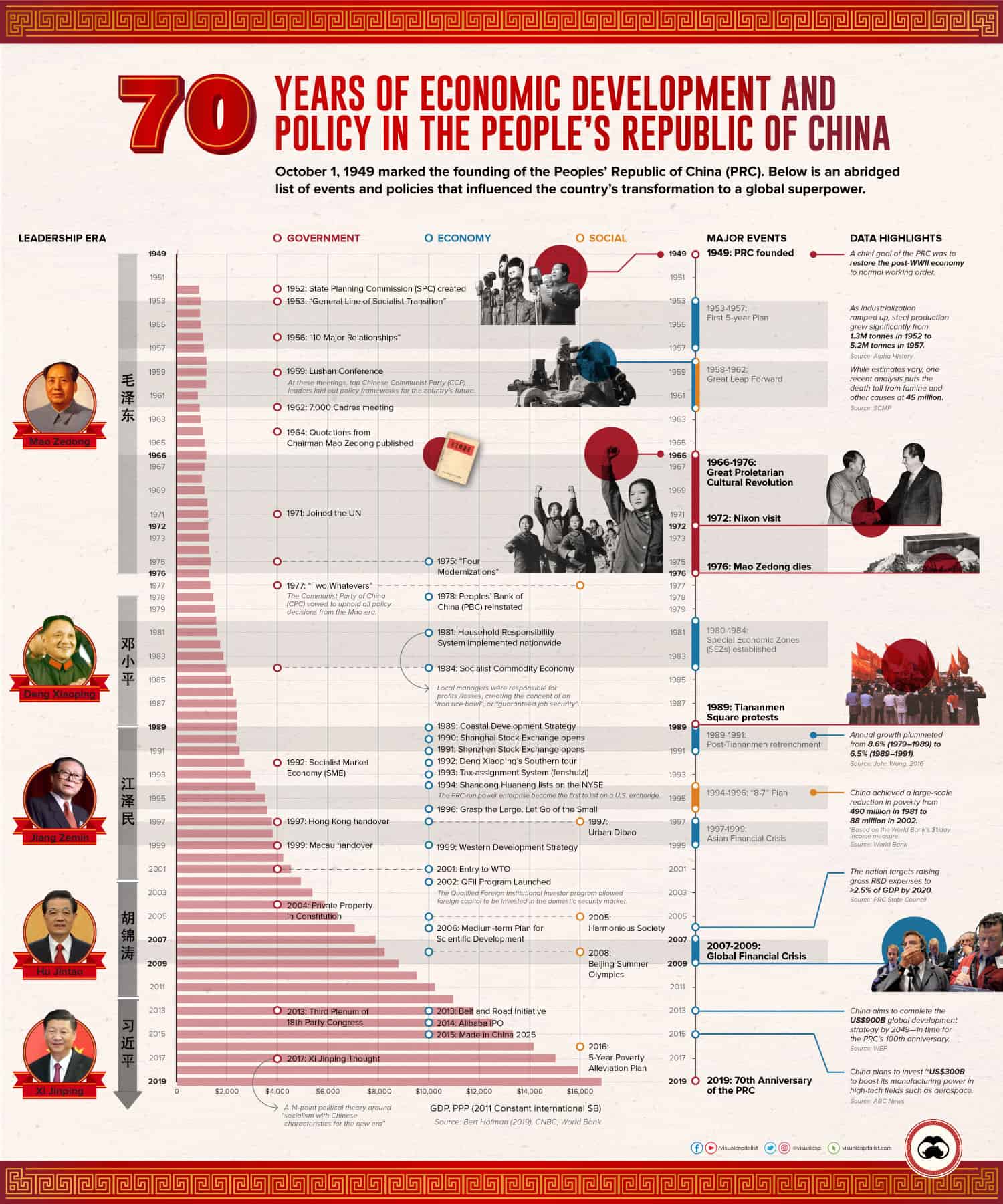
The newer generation might not realize this, but for many of us, it is hard to believe that China is the second-largest economy on the planet now.
I mean, when and how did that happen? Many of us were born during a time when China was an agrarian country best known for exporting cheap manufacturing. Now it is a superpower that has neighboring countries fearing for their independence and is able to bend American companies to their will… over and over again.
The following chart was conceived based on the analysis by Bert Hoffman, the World Bank’s Country Director for China and other Asia-Pacific regions. It shows the changes in government, economy, and social issues that have affected and pushed China into becoming what it is today. It starts with the Chinese Civil War which consolidated the People’s Republic of China (ROC), an era of internal turmoil caused by Mao Zedong’s era, and then a wave of socio-economic reforms that had the main intention of closing the inequality gap. Many financial experts even predict that China will be the dominating economy by 2030.
Love it or hate it, the Chinese project has proven to be successful, and it’s worth being discussed and studied for all the valuable lessons we can learn from it.





